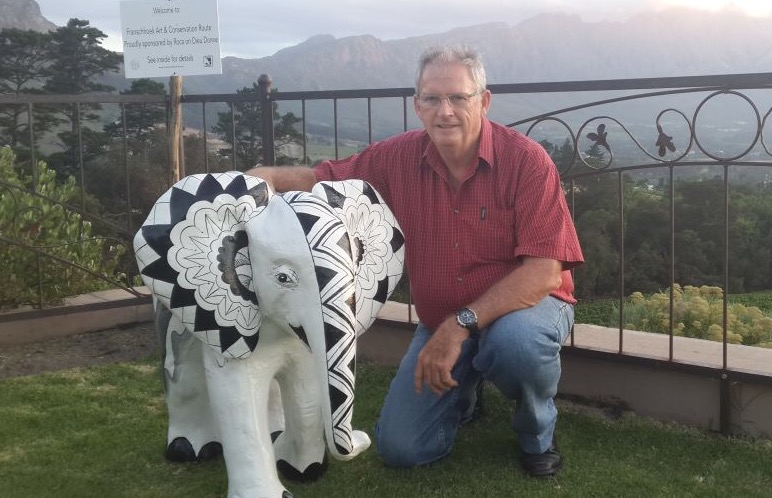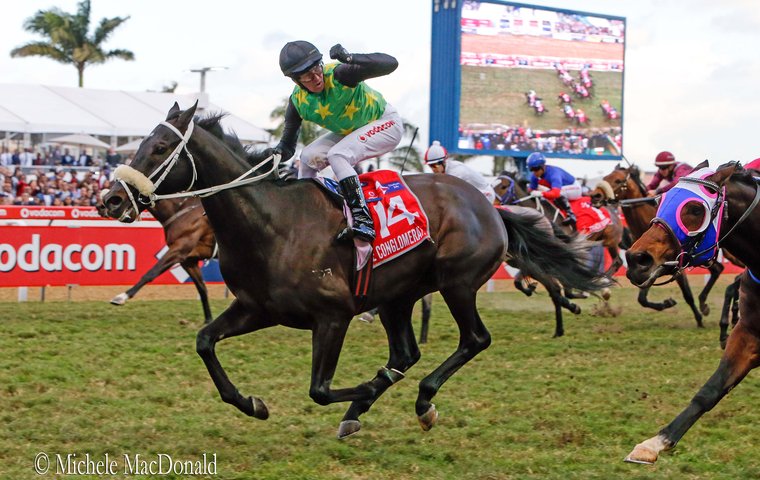
Try for a moment to imagine an African version of the Kentucky Derby or the Melbourne Cup, or a day at Royal Ascot.
Racegoers flow past in vivid streams of swirling sub-Saharan colors and designs as horses rocket down a racetrack flanked by a multitude of stands and tents awash in pounding music, flowing drink and excited punting.
Of course, it’s impossible to envision all the details of the unique vibe of what is billed as ‘Africa’s Greatest Horseracing Event’, the Vodacom Durban July at Greyville Racecourse in South Africa.
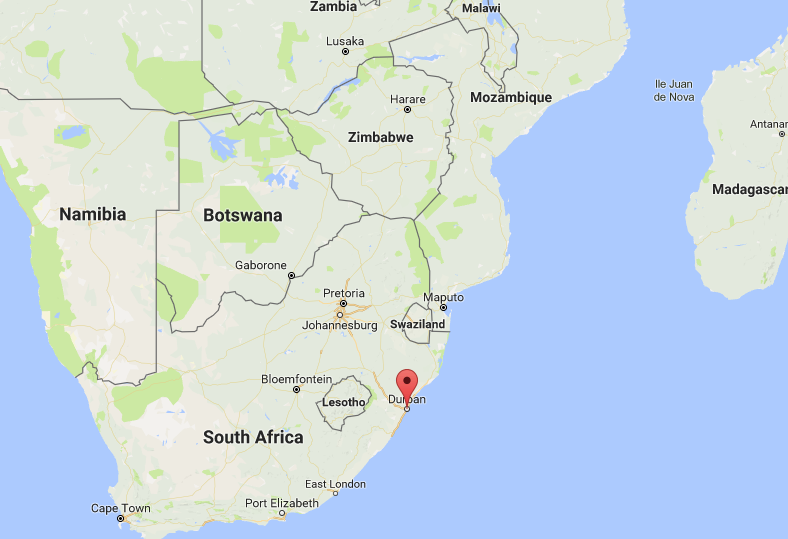 Lying not far from the wild surf of the Indian Ocean at the bustling port of Durban (map courtesy of Google Maps), Greyville seethes with a crowd of up to 55,000 people, from diamond moguls to janitors, on the first Saturday of the first full month of the Southern Hemisphere winter.
Lying not far from the wild surf of the Indian Ocean at the bustling port of Durban (map courtesy of Google Maps), Greyville seethes with a crowd of up to 55,000 people, from diamond moguls to janitors, on the first Saturday of the first full month of the Southern Hemisphere winter.
Those who haven’t been fortunate enough to attend the spectacle best known as simply ‘The July’ could not fathom the sights and sounds, which in recent years have included appearances by South Africa’s controversial President Jacob Zuma to mixed choruses of cheers and catcalls.
Stunning women wearing feathered hats up to three feet tall and men flaunting cheetah-patterned suits and fedoras prowl the grounds, where partying begins soon after 9 in the morning and carries on until — and sometimes past — the official closing time 13 hours later.
The main race, which is one of six group stakes on the outstanding program, annually draws a field of 18 competing under handicap conditions over a testing 2200 meters (about 1⅜ miles, or 10½ furlongs), providing electric betting opportunities and sparking a turnover of over R100 million for the day (nearly US$8 million).
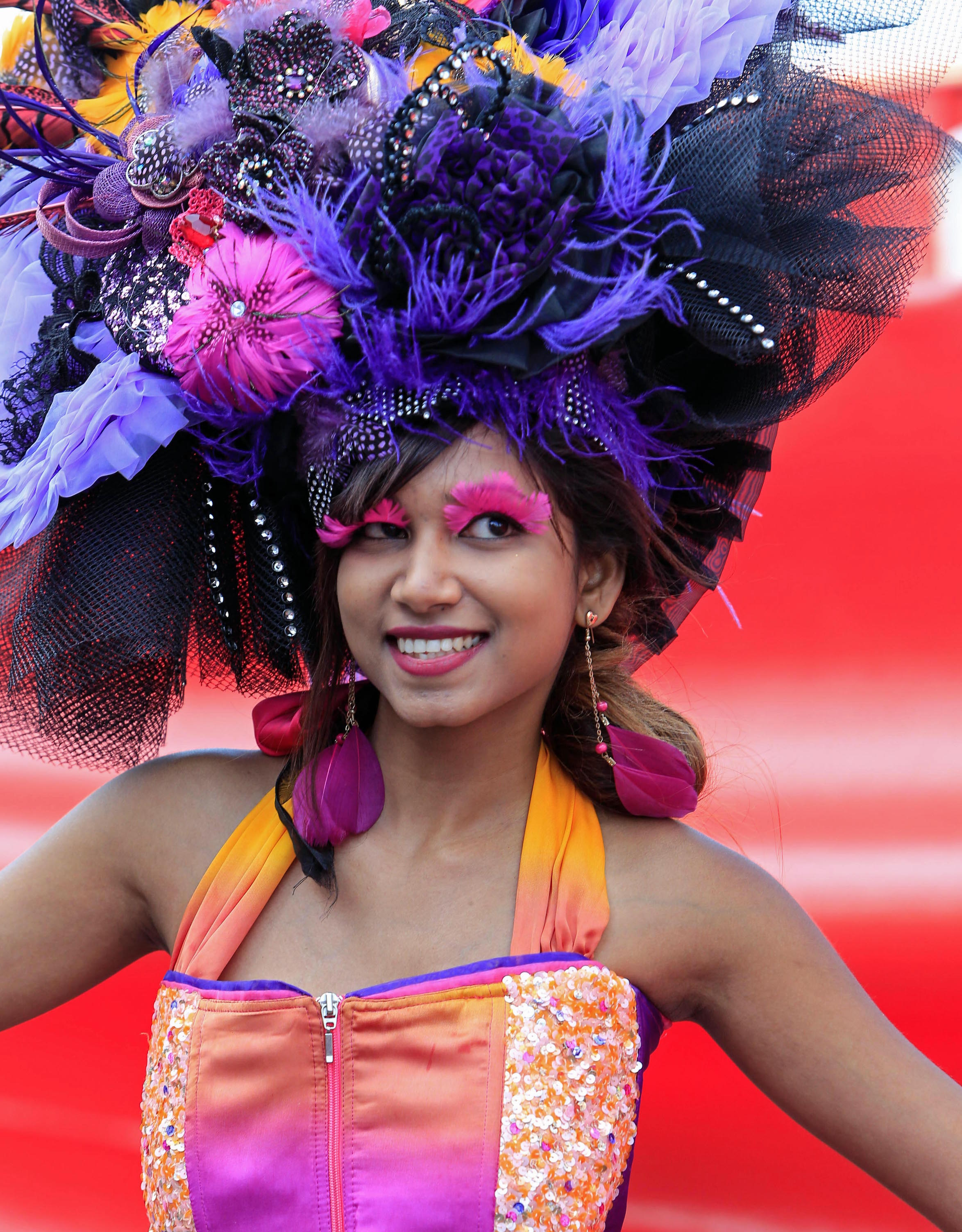
With the annual racing season ending on the last day of the month, The July and its rich purse of R4.25 million ($330,000) can play a pivotal role in title honors for horses and trainers. But there is more to this day than the typical big-race hoopla experienced in other countries.
If asked by locals whether they have seen The July’s notorious ‘13th race’, which is not contained in the official program, the uninitiated would have no idea that a field of naked, typically inebriated young men would conclude the day’s nonstop spectacle with a ribald sprint down the turf course.
Rather than offensive, the longstanding tradition seems just another uncorked expression of the particular effervescence found in South Africa.
“The 13th race has been going for as long as I can remember. I’m pretty sure it was there when I got there. I had nothing to do with it, that’s what I’m trying to say,” said a bemused Ken Tweddell, the event marketing manager for Gold Circle, which operates Greyville, when asked about the colorful custom.
Perhaps more than two decades ago, the proprietor of a Durban nightclub who was running a party tent in the track’s infield parking lot first encouraged some young attendees to streak down the racetrack after the last horse race of the day. Thus, the 13th race was spawned.
Distinctive trophy
As Tweddell related, this nightclub owner had silicone carved into the distinctive shape of the primary male reproductive organ and mounted on a piece of wood.
“So, for many years, that was awarded to the guy who won the race,” Tweddell said. “Then it disappeared.
“Thank goodness,” he added, laughing, before relating how women attending the Durban July often “stand on their tippy toes in their high heels” to witness the 13th race each year and share some hearty laughs at the antics of the men.
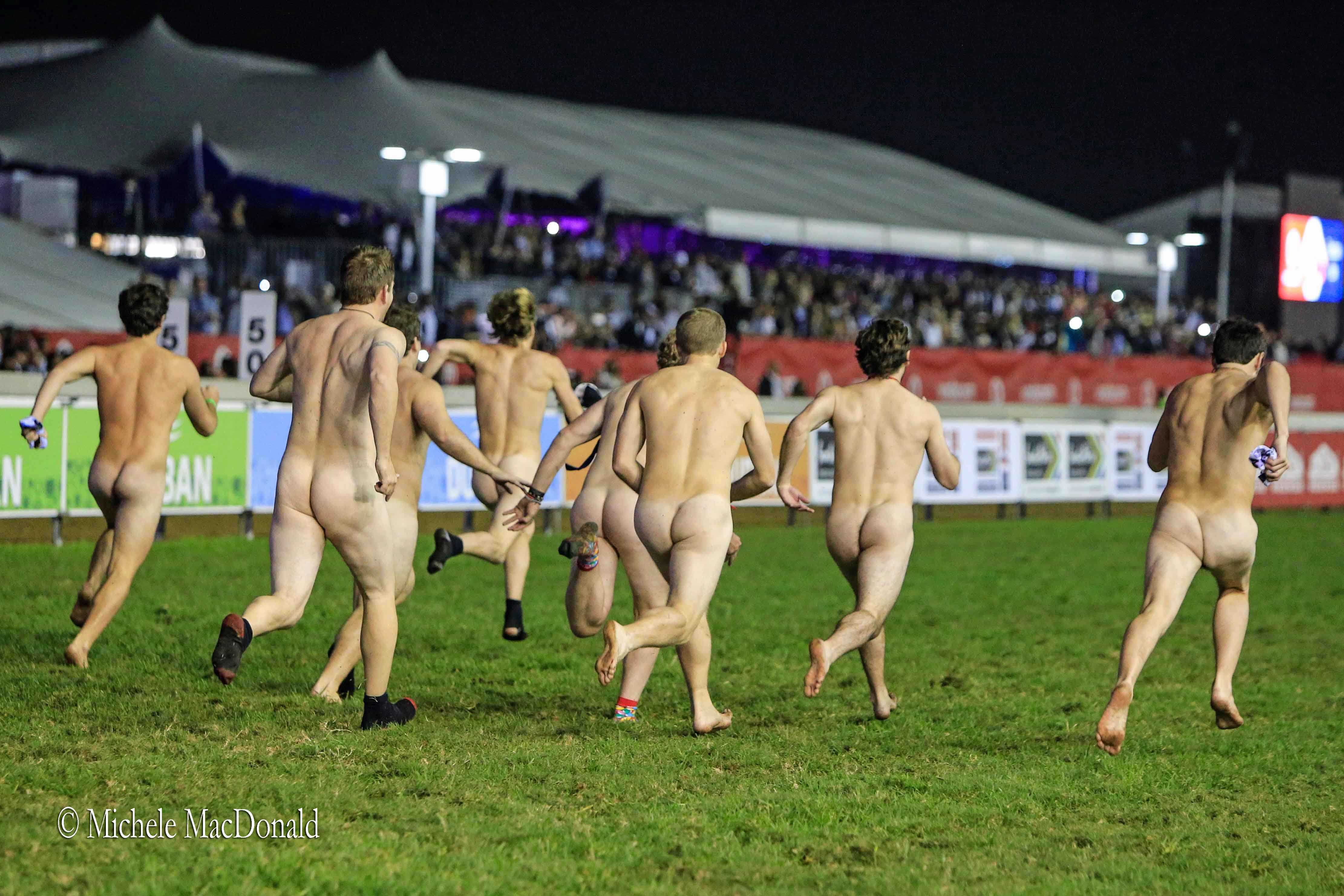
While Tweddell is not responsible for this colorful part of the Durban July’s long history, he is the creator of much of everything else surrounding recent editions of the race, which will be run for the 121st time on Saturday.
Known as ‘Mr. Vodacom Durban July’, according to a press release, Tweddell meticulously plans the annual theme for the extravaganza, which this year is ‘The Colour of Magic’, with a special hue implied to be red, the key color of branding for the race’s title sponsor.
Thus, many racegoers might be expected to punctuate their attire with red or drape themselves entirely in the vivid color, which also is likely to be a mainstay in hospitality decor.
He also has arranged everything from the old-fashioned ritual of growing 20 bean plants — each tagged with the name of one of the Durban July entrants, including two reserve runners, in an effort to forecast the winner based on which plant grows the most — to elaborate fashion contests for student designers and for racing attendees. The fashion competitions hinge on the artful interpretation of the theme.
Tweddell has worked his way through 23 editions of the race so far and has watched it evolve into not only Africa’s greatest racing day in terms of attendance, betting and glitz, but also one that has captured worldwide interest. The Durban July has become an intriguing international wagering event and a launching pad for some of South Africa’s horses to compete on the global stage.
Equine superstars
London News, the 1996 Durban July winner, sparked that trend, going on to win the 1997 running of the Queen Elizabeth II Cup in Hong Kong. Ipi Tombe, the Zimbabwean-bred filly who captured the Durban July in her championship season in 2002, subsequently conquered international males in the Dubai Duty Free in course record time at Nad al Sheba the following year.
Bold Silvano, a South African champion for 2010 after winning that year’s Durban July, progressed on to Dubai to snare the 2011 Al Maktoum Challenge Round 2 at Meydan.
Igugu, South Africa’s Horse of the Year for 2011 after winning the Durban July that season, went on to be group-placed in Dubai for trainer Mike de Kock, who also conditioned Ipi Tombe and Bold Silvano as well as 2007 Durban July winner Hunting Tower, who was multiple group-placed in the UAE.
However, the talented Igugu, among others, was compromised by the taxing health regulations in place around the world aimed at preventing the spread of African Horse Sickness, and she was never quite herself while in Dubai, according to de Kock. It takes months of quarantine and shipping — and a subsequent loss of training time — to get a horse from South Africa to Dubai, for example, and horses that travel into South Africa from other countries are unlikely to re-emerge due to those restrictions.
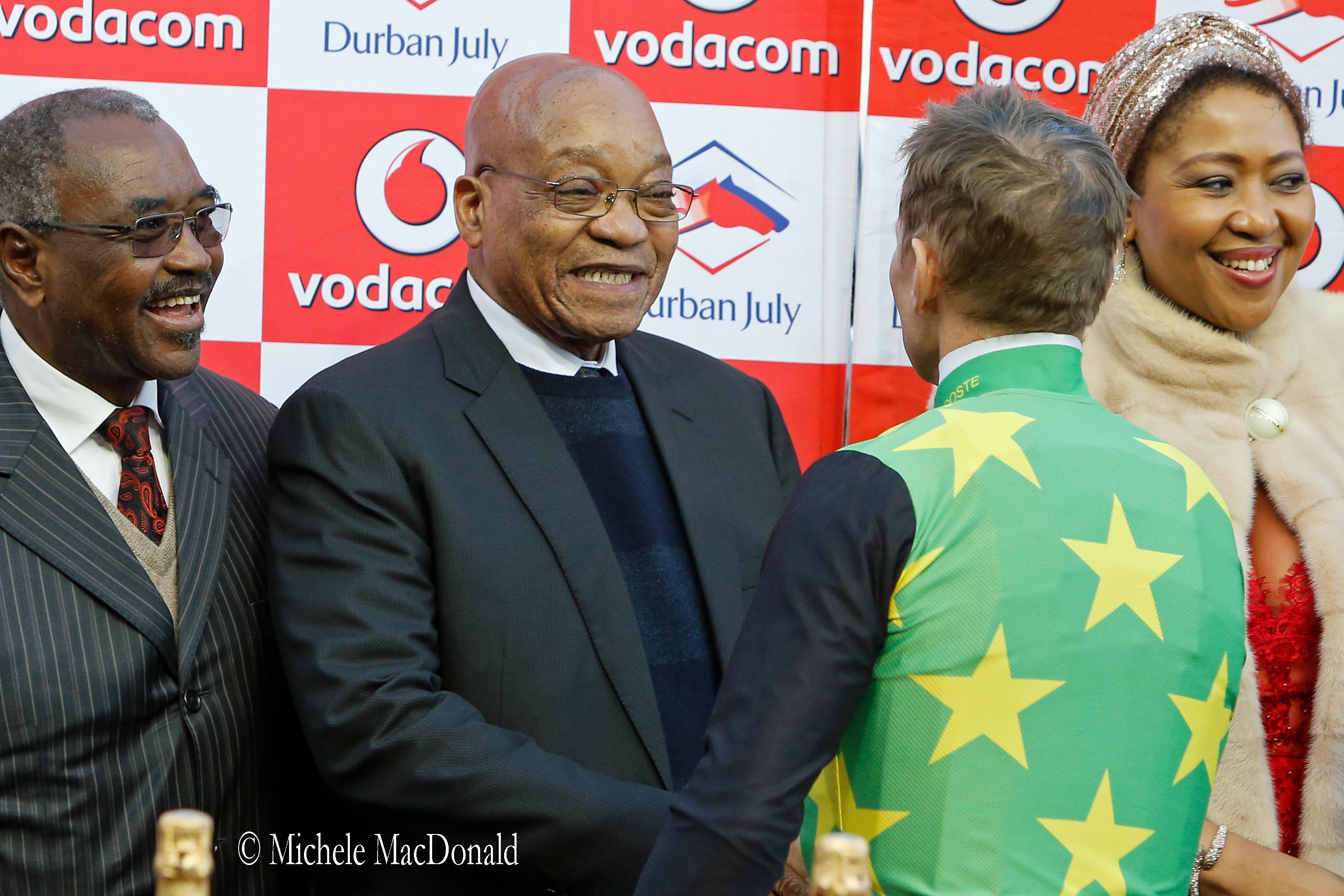
South African officials continue to try to open borders for the nation’s bloodstock and reduce the restrictions, emphasizing that current science allows concrete proof of a horse’s health for export after proper testing at quarantine facilities.
At the same time that battle is being waged, Gold Circle has moved progressively to introduce the Durban July and South Africa’s star trainers, jockeys and horses to a global audience by providing opportunities for international media to report on the race.
“Clearly we want to be recognized internationally and the only way we are going to do it is to bring people here. It’s not going to happen automatically,” Tweddell said. “South Africa is this little country which is at the bottom of Africa, and there is a certain amount of trepidation among people about coming here.
“So, we have to encourage people to come to see us, [to learn] that we are actually part of the real world,” he continued. “Everybody that comes loves it here.”
Not only is The July among the most vibrant racing events, with family picnics mixed in with the VIPs, red carpets and fashion, its long history showcases the very best of the South African sport.
Initially run in 1897, when won by British-bred Campanajo —who repeated his victory the following season to become the first of only four horses to win the race back-to-back and the only runner to carry as much weight as 66kg (about 145½ pounds) — The July has yielded a rich share of legendary racing fare.
The horse who was shot
The 1967 edition ranks among the most memorable, with multiple champion Sea Cottage dead heating with South African Guineas winner Jollify, with the latter carrying 27 less pounds.
Even more remarkable was the fact that Sea Cottage was carrying a bullet lodged in his hindquarters after a shooting incident the previous year. A nightclub bouncer allegedly was paid by his boss to target the popular horse in order to eliminate his chance of winning and causing a big loss to a bookmaker, to whom the club owner owed money; the unthinkable act was undertaken as a way to repay the debt.
Incredibly, Sea Cottage ran in The July in 1966 only three weeks after being shot and he was unlucky while finishing fourth in one of his few career losses. He returned for the dead-heat victory a year later.
“Sea Cottage was the darling of the country and he had been shot the year before, so that race must be among the pinnacles in July history,” Tweddell said.
“Sea Cottage ended his career with 20 wins from 24 starts and was widely regarded as the greatest horse to ever grace the South African turf until (Triple Crown winner) Horse Chestnut arrived,” Gold Circle related on its website for last year’s 50th anniversary of his July victory.
Jack Bradford, the handicapper who set the weights for Sea Cottage, Jollify and the rest of the field, was given a gold watch by the Durban Turf Club for what proved to be such a dramatic conclusion to the race.
The triumph by London News in 1996, the centennial edition of The July, also was unforgettable, almost as much for the weather as for the win by the horse known as “the hard-galloping chestnut who put South African racing on the world map”.
As Tweddell recalled, “On that day, strangely enough, it was overcast all around Greyville, but at Greyville there was sunshine. It was so overcast that out at sea there were seven what looked like waterspouts — little mini-tornadoes — coming down when the race was on. It was the most amazing sight. Here we were basking in the sun and out there it was dark, dark.”
Another memorable edition of the race occurred when Horse of the Year Pocket Power hit the wire on equal terms with imported British-bred filly Dancer’s Daughter in 2008, the only time there has been a dead heat other than the Sea Cottage-Jollify finish.
Top jockeys
This year, the 18 horses poised to run include eight G1 winners: Marinaresco, who was second last year to fellow returning entrant The Conglomerate; French Navy; Master Sabina; It’s My Turn; Nightingale; Edict Of Nantes, and Al Sahem.
The human superstars of South African racing will be well represented, with the nation’s current leading trainer, Sean Tarry, holding four entries in Al Sahem, French Navy, Tilbury Fort and Safe Harbour. Second leading trainer Justin Snaith also has four horses entered: Master Sabina, Krambambuli, It’s My Turn and Black Arthur.
Top jockeys Piere Strydom, Anthony Delpech and Anton Marcus — each of whom has won four Durban July trophies — all have mounts. Strydom, who won on The Conglomerate last year, has the call on 2016 Cape Derby victor It’s My Turn, while Delpech is set to ride the filly Nightingale and Marcus has been named on 2017 Cape Derby winner Edict Of Nantes.
Also flying back to ride in the race will be 20-year-old Callan Murray, who is creating quite a stir in Hong Kong at the moment, and former South African champion Gavin Lerena, who is riding in the UK for the British summer - with some success.
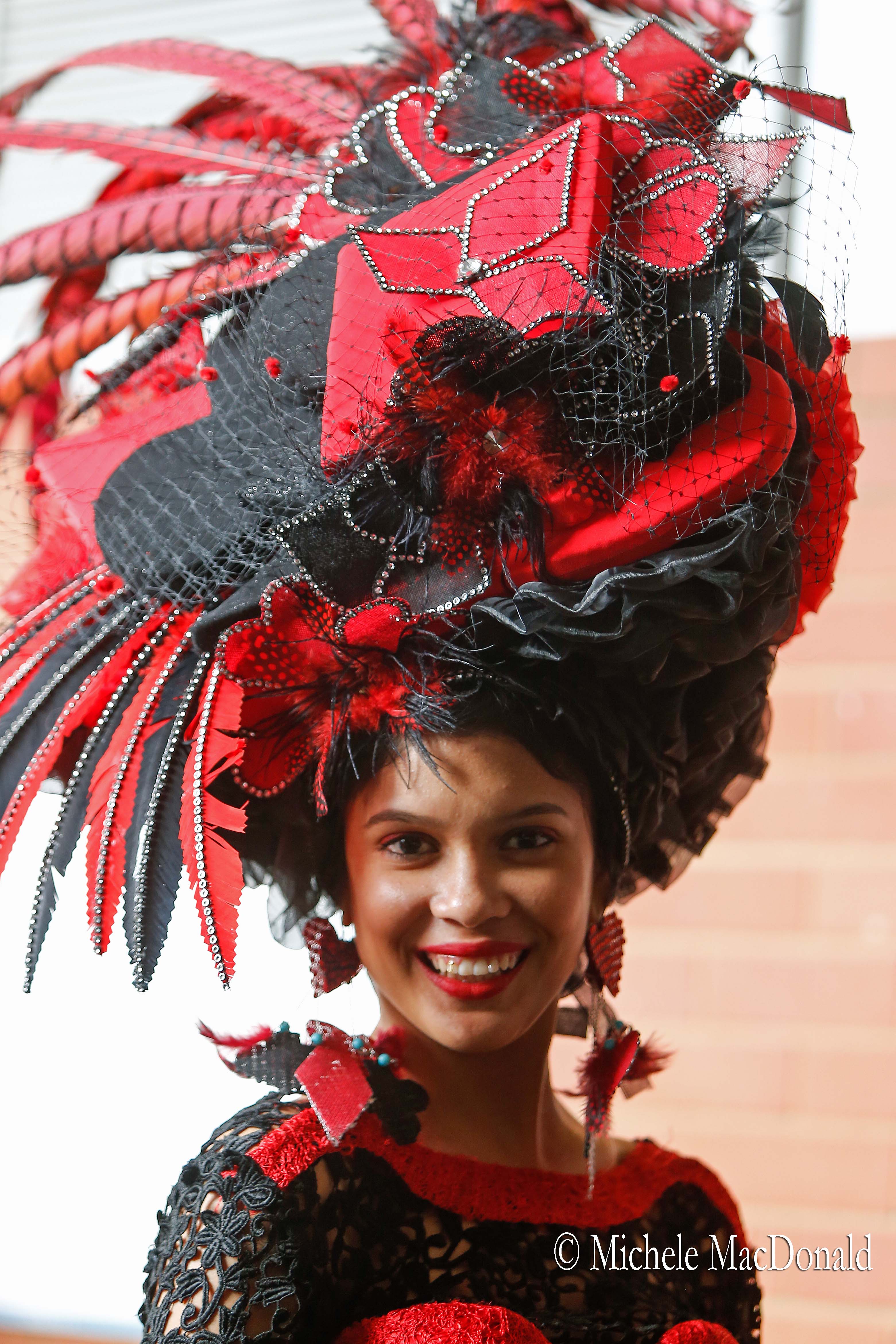
Remarkably, current leading South African sire Silvano — a German-bred multiple international G1 winner — is represented by six offspring in the potential Durban July field, led by Al Sahem, Marinaresco and Nightingale and including reserve runner Nebula. Silvano already has a distinguished record as the sire of 2015 winner Power King, as well as 2013 winner Heavy Metal and Bold Silvano.
On the social side of The July, Tweddell has been helping orchestrate increasing interest in the fashion contests and a showcase event for invited, established fashion designers. Gold Circle has skillfully weaved these fashion festivities, including a contest for student designers that this year drew 105 initial competitors from six KwaZulu-Natal colleges and technical schools, into the fabric of the race through a series of social events and related publicity.
“We get huge opportunities to publicize all those things well in advance of the race, so the seed of what is coming up on the first Saturday of July gets planted a good three months in advance through the fashion,” Tweddell said.
On race day, fans compete for the titles of most striking couple, exceptional hat or fascinator, and classic racewear for women and for men, with the contests beginning at 9:30 a.m. and extending for several hours before the awarding of cash and other prizes. Tweddell said he was inspired by the classic clothing he saw Australians wear at the Melbourne Cup in coming up with the main category names for men and women, but admitted those designations don’t really represent the clothes that typically are worn to The July.
Dazzling colors
“It’s actually badly named because it’s not classic race wear — it’s anything but classic - but it’s interesting and it gets photographed,” he said with a laugh about the dazzling colors and styles, many ethnically-inspired, that are paraded at Greyville.
Gold Circle also has experimented with technological approaches to promoting The July. Last year, for the first time, newspaper advertisements and posters were created with Zapcodes for each runner. A cell phone utilizing the Zappar app would reveal several layers of entertaining and informative data.
“In the middle was a picture of the horse, then there were five or six circles around it, and one was the horse’s recent form, one was the jockey’s performance in The July, another was for the trainer, then there was one for pictures of the horse. The last one, which I thought was brilliant, was the horse’s last three wins — actual video footage with commentary and everything,” Tweddell said.
“We had to compile all the data and that was the hardest part of the whole thing. I was so skeptical about it at first. I thought there was no way this is going to work, it’s just going to be too much information and it’s not going to load fast. But it was brilliant.
“Now that we know it works, we can try to find more ways to boost it as it was very successful,” he said.
Primary challenge
Gold Circle also has offered special forms, including online versions, to expedite popular office pool betting on The July.
An additional step toward garnering public interest and good will is the donation of revenue generated by the big race day to support South African Riding for the Disabled, a non-profit organization which provides horseback riding classes at no cost to mentally and physically handicapped children up to the age of 16.
In looking to the future, Tweddell said some consideration has been given to boosting the prize money of The July to US$1 million to make the event even more appealing. Such a move wouldn’t really be viable, however, until or unless quarantine restrictions are eased to allow more transport of horses in and out of South Africa and the depressed value of the domestic rand versus the dollar changes in a positive direction.
One of the primary challenges for Gold Circle going forward will be how to replace Tweddell, who will complete his 24th Durban July this year and who will hit the mandatory retirement age of 65 with completion of the 2018 edition of the race.
Tweddell said he has thoroughly enjoyed working with Gold Circle Marketing Executive Graeme Hawkins and that they share a passion for identifying opportunities. But, with only an assistant working directly with him, Tweddell has spent many long hours on not only the planning of The July, but also the ideas that propel the event into brilliant life.
The pulse of The July and of racing in general has become, in large measure, the beat of his own heart.
“Generally I’m a bit of a sucker, and if I can’t get somebody to do something, I do it myself. That’s bad because you end up killing yourself, but you get things to happen,” Tweddell said. “And I love my job so much that I don’t really mind.”
- The 2020 Durban July is being run on Saturday (July 25).



